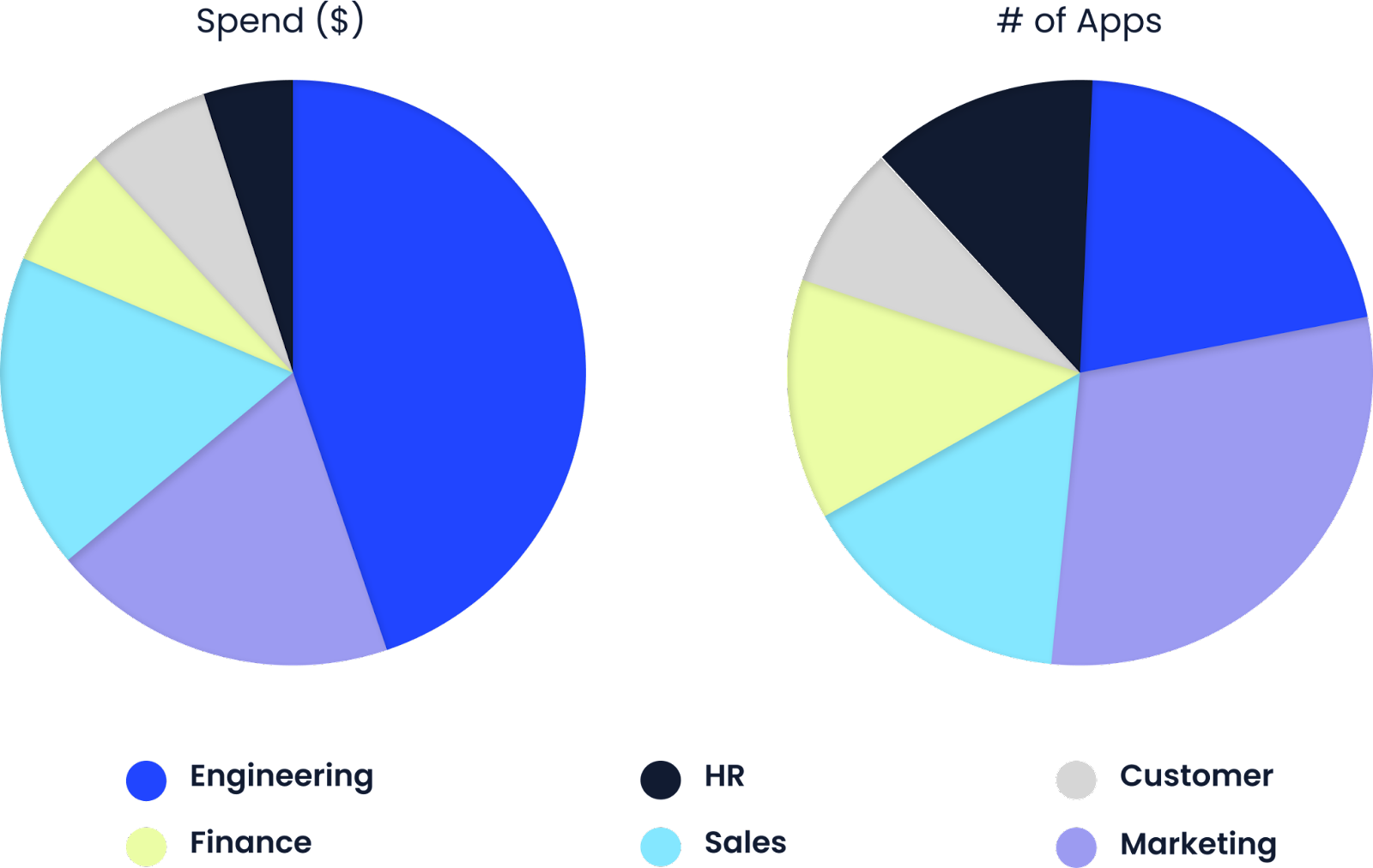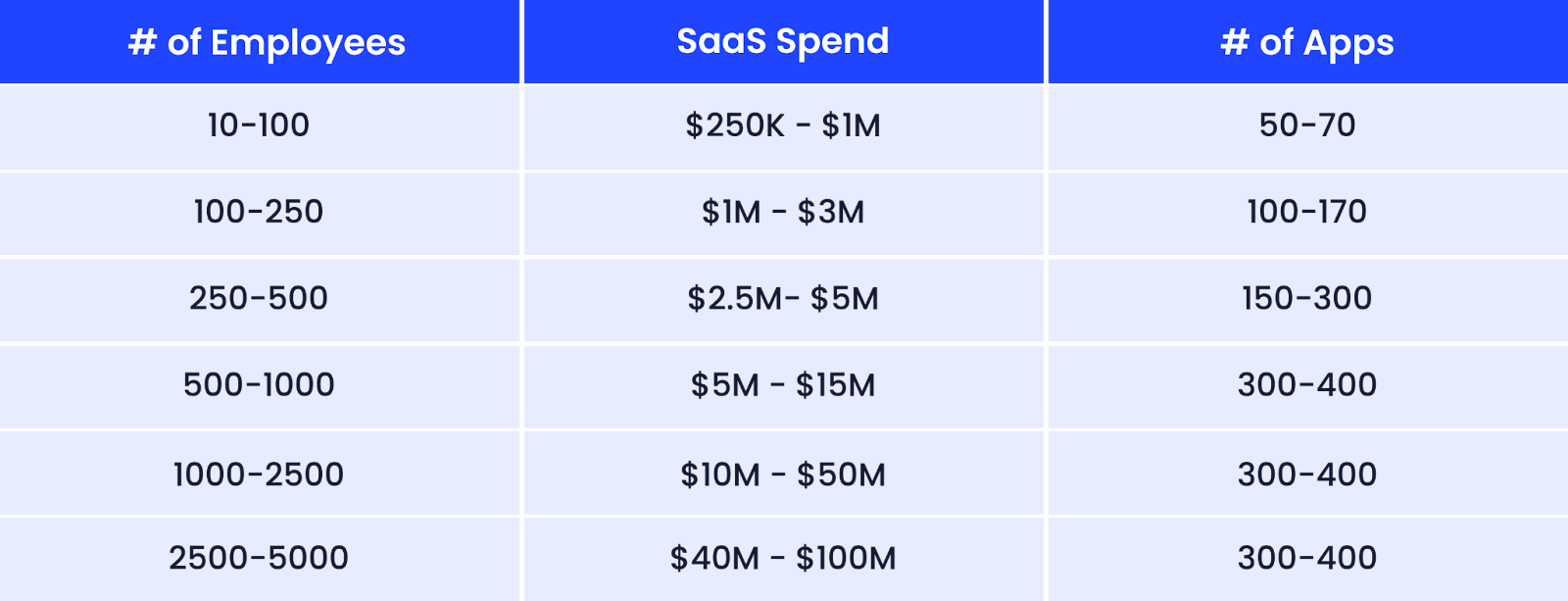In today’s business world, every dollar counts for more than ever before. The current economic downturn, funding crunch, and race to be cash-flow positive are forcing organizations to reevaluate budgets and spending patterns. This has pushed CFOs to issue mandates — cut software spend between 10% and 30%.
Based on data available from my company’s platform, spend on software is now the third-biggest expense for organizations, right after employee and office costs.
CFOs must work closely with CIOs and department heads to devise smart plans to cut their SaaS spend and get more bang for their buck. At the same time, reducing software spend should not negatively impact company growth or inhibit innovation.
The primary objective for CFOs should be to identify where they’re spending, recognize departments with the highest costs, and identify instances of low utilization and application redundancies.
I think the right approach to cutting SaaS spend involves a data and metric-driven strategy. Understanding the ROI for each vendor and evaluating the SaaS spend per employee will enable the CFOs and CIOs to identify the software’s true value and how quickly it will add to the company’s top and bottom line. Spend analysis will empower you to make informed choices regarding cost optimization.
What does typical software spend in organizations look like?
Our data indicates that the engineering department spends the most, followed by marketing and sales, and then HR. While the engineering department tops spend by dollars, it’s not the department with the highest number of SaaS applications. That distinction goes to the marketing team.

Image Credits: CloudEagle’s database
So, should we ask the department that spends the most to reduce spending?
Software is now the third-biggest expense for organizations, right after employee and office costs.
Maybe yes, but let’s look at the low-hanging fruit first — sales and marketing teams have the highest count of abandoned and underutilized apps.
Sales and marketing teams must adapt quickly to changes in the market and evolving customer requirements; they often acquire different tools to meet their immediate demands, and when those requirements shift, they frequently transition to new tools, leading to low utilization and redundant tools.
Secondly, CFOs can use benchmark data to ensure their spend aligns with similar-sized companies. Depending on the size of the company and the employee’s department, companies spend an average of $1,000 to $3,500 on software tools per employee. CFOs must collaborate with teams to optimize the buying process and control spending. If your company’s spend does not meet the typical benchmarks of peers, it might be good to investigate why.
Possibly look at low usage and abandoned apps; focus on apps with overlapping functionality, eliminate duplicate apps, and look at vendor consolidation.

Typical software spend (based on employee size). Image Credits: CloudEagle’s database
Cost-optimization playbook to reduce software spend
I often come across the office of the CFO asking me how they can reduce SaaS spend and create a cost-conscious culture in the company.
Here’s how:
ROI-driven buying decisions
Purchase requests must be centered around the product’s ROI rather than merely fulfilling a task. Before raising a purchase request, the team must clarify how the application will contribute to the organization’s bottom line.
The CFO can ask for an ROI analysis before the purchase request comes to their table. You must ask:
- How will the application benefit the organization?
- How long is the team planning to use the application?
- How soon will it impact our top line or bottom line?
- What are the upfront costs of acquiring and implementing the software?
- Will it lead to cost savings regarding time, resources, or manpower?
- Will it require regular updates or additional investments?
These questions will help you understand the product’s value and how it will financially benefit the organization. An upfront ROI analysis will ensure that departments buy applications with a broader perspective to increase the organization’s bottom line and not just complete a task.
Understand pricing and longer-term costs
SaaS vendors use various pricing models, ranging from flat-rate, tiered, per-user, and consumption-based pricing.
Organizations must understand pricing and costs for this year and future years. Do scenario analysis: If the company grows 2x, how will the cost structure change? If the company were to reduce in half, would they still be tied to the old plan and costs?
Opting for flexible pricing terms for better spend control may be prudent. In the end, the contract should have provisions so the company only pays for what it uses.
Vendors alter their pricing plans every year, and the office of the CFO must be able to predict this and create necessary contingencies in the SLAs to avoid cost overruns.
Prevent duplicates from creeping in
My team often comes across organizations using applications with similar functionality across various teams.
During the buying process, the CFO must collaborate with other stakeholders to identify overlapping apps — possibly a tool that constantly scans your environment to identify free apps (aka, shadow IT) that may be duplicates of your sanctioned apps.
Lack of internal communication during the buying process may be one of the reasons behind duplicate apps. I think the easiest way to eliminate them is by consolidating the functionalities into one application for better control and SaaS savings.
Teams often opt for best-of-breed players rather than full-stack solutions to meet their immediate needs. Enabling cross-functional teams to come up with joint requirements will prevent that from happening.
A few questions will help you better understand the value:
- What features will address our pain points?
- Are there other cost-effective software options that offer similar features?
- Are we currently using any other tool that may fulfill part of the use case?
- What are the unique features that set the application apart?
Asking the right questions enables the finance team to cut through technical jargon and concentrate on what truly matters: ROI.
Total cost of ownership
The team conducts initial research during the purchase, but they often miss the bigger picture: the total cost of ownership.
When the purchase request reaches the CFO, the team must look at the entire lifecycle, not just the purchase. This includes the upfront and ongoing expenses such as support, subscription fees, upgrades, training, and integration costs.
I recommend you ask for the TCO analysis during the ROI analysis for better decision making and purchase the application that aligns with your goals.
The key to SaaS spend optimization
The CFO’s mandate for budget cuts is not to curb the usage of SaaS applications in organizations. Instead, it is to ensure that every penny spent contributes to the bottom line.
Now that organizations are more cautious about saving on every dollar, CFOs have taken center stage to align business requirements with financial goals.
With these insights and frameworks, I believe organizations will know where to look and what to do to optimize their SaaS spend.
